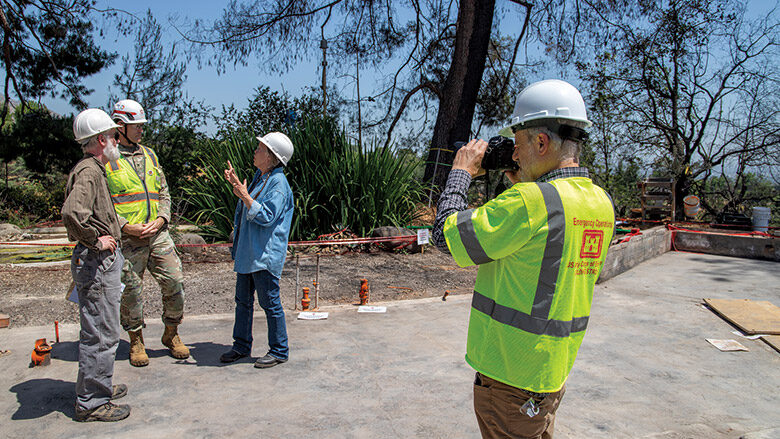
ENR and Army Corps Often Meet in Aftermath of Disasters
[ad_1]

This week’s cover story on the U.S. Army Corps of Engineers’ mission to clean up devastating damage sustained by Los Angeles County during the Eaton and Palisades fires this year continues a long history of reporting on agency activities. That includes Corps work to transform the Mississippi River into a major shipping channel and, since the late 1800s, to control its flooding, as well as military construction to support troops in two world wars and in other global incursions and to deploy an emergency removal of the collapsed Francis Scott Key Bridge in Baltimore last year.
While best-known for flood control, inland waterway and environmental protection work, Corps post-disaster efforts are what ENR reporters often find themselves covering—this week the Los Angeles fires reported by Editor-in-Chief Scott Blair (see story, p.22). “The Corps has a diverse role in the military and beyond,” he notes. “In the last 10 years that I have been in the field covering disasters, it has been the go-to entity FEMA uses to clean up and manage much recovery and rebuilding work.” Other devastating disasters are Hurricane Maria in Puerto Rico in 2017 and Hurricane Harvey flood damage in Houston the same year.
This year marks the 20th anniversary of Hurricane Katrina’s devastating flooding of New Orleans and damage to the Gulf Coast. Since that catastrophe, the Corps implemented the New Orleans Hurricane & Storm Damage Risk Reduction System, a $14.5-billion program completed in 2018 that has helped substantially reduce flood risk to the city and region and stands as an example to other cities (see Viewpoint, p. 68).
In the aftermath of the California fires, the U.S. Environmental Protection Agency and FEMA performed environmental hazard cleanup, which took about a month, and contracted the Corps to take charge of the rest of the cleanup effort, including hiring industry contractors in conjunction with county and local government officials.
In his experiences with the Corps, Blair says he was often impressed with management skill and dedication of its team members, especially as deployments that often lasted as little as one month were done with seamless transitions and excellent communication. “As an institution,” he concludes, “the Corps remains unique.”
[ad_2]
Source link
Post a Comment
You must be logged in to post a comment.






